Carnivorous plants
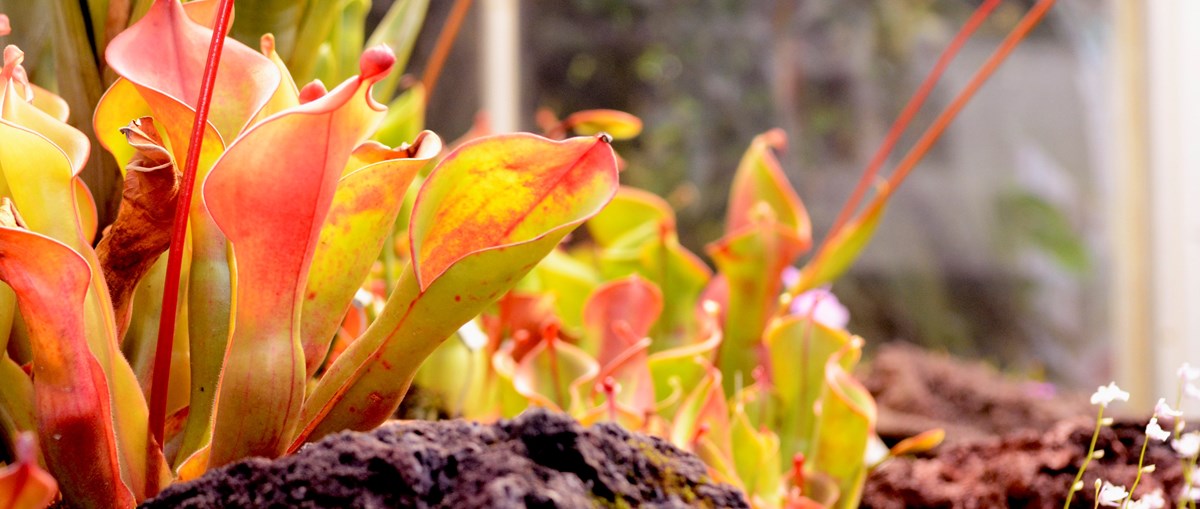
Plants with a taste for flesh, true or science fiction? In the Disa-house you will find many fascinating species of carnivorous plants, plants with the ability to capture and feed on animals. This ability has arisen several times during evolution and today more than 600 species are known to science.
Carnivorous plants occur all over the world except for deserts and arctic habitats. A carnivorous plant doesn't have to eat animals to survive it can still do fine on regular photosynthesis alone. They are however specialized to cope in nutrient poor habitats where other plants have a hard time to thrive. These specializations such as leaves turned into traps and a smaller root system make them less successful in regular nutrient rich habitats.
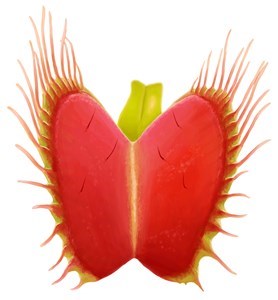
The Venus flytrap leaf has six hairs that the prey trigger for the trap to close.
Common for all flesh-eating plants is that some of the leaves are remodeled into traps of various kinds. The most famous is perhaps the Venus flytrap (Dionea muscipula), an active snap trap that closes upon touch. The pitcher plants are passive traps just waiting for a prey to fall into their pitchers. Sundews (Drosera) has sticky traps were the prey gets stuck in the mucilage and the leaf rolls up around it for digestion. There are carnivorous water plants as well such as the amazing bladderworts (Utricularia) with complex underwater traps using negative pressure to suck their prey into their traps. They catch small water living organisms both animals and microalgae.
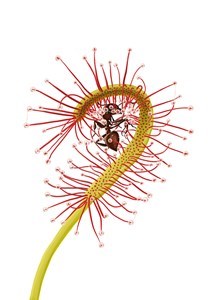
The Sundew leaf uses sticky glue and then rolls up tightly to trap its prey.
It is common for all carnivorous plants with quite a bit of bycatch such as pollen or microalgae. Most of the prey is insects but arthropods, frogs and small rodents can also be found in the traps. Some species of pitcher plants (Nepenthes) serves as toilets for bats and small rodents, they eat nectar from the pitcher lid and at the same time they poop in the trap and the plant can absorb the nutrients from the feces. Look at some of our pitchers don't they almost look like toilets?
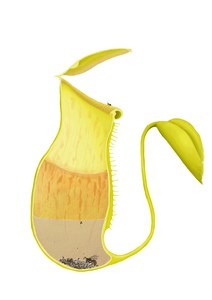
A cross-section of a pitfall trap. The fluid is full of enzymes that dissolves the prey that falls down.
Many of the carnivorous plants have very long flower stalks, that is to prevent the pollinators getting caught in the traps. Other solutions is to have large pollinators that can't get stuck in the traps or like the bladderworts keep the flowers above water and the traps below.
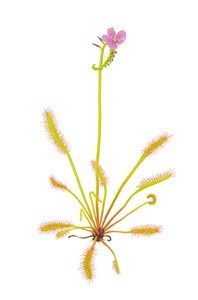
The Sundew plant keeps its flowers high up and far away from the prey-trapping leaves.






